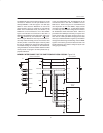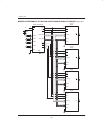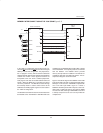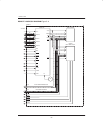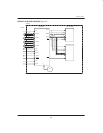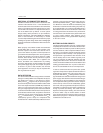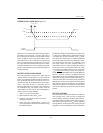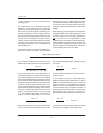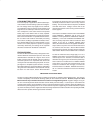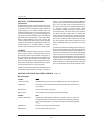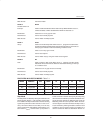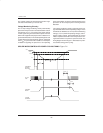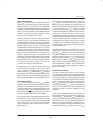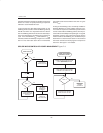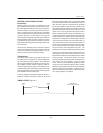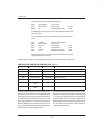
USER’S GUIDE
050396 58/173
59
LITHIUM BATTERY USAGE
In the vast majority of applications, lithium batteries pro-
vide a reliable means of backing up data and configura-
tion. The voltage varies only slightly over its useful life,
so it is difficult to measure capacity. A CR chemistry will
begin life at 3.3V and drop to 2.9V near the end of life.
As a consequence, some users choose to incorporate
battery clips so that lithium cells are easily replaced.
This is not recommended since such clips are suscepti-
ble to shock and vibration. It is possible that the connec-
tion to a lithium cell would be momentarily lost during
such a shock, resulting in a potential loss of data. There-
fore, soldered battery tabs are recommended. If a user
elects to use a battery clip with a capacitor (to support
momentary disconnect), the leakage of the capacitor
should be considered in the lifetime calculations.
FRESHNESS SEAL
The Secure Microcontroller family is designed to maxi-
mize the lifetime of a lithium backup source. The circuits
described above contribute to a long life. There is one
further provision that will benefit users that intend to
store their systems in an unpowered state, but that do
not require it to retain data during this period. An exam-
ple might be a completed system stored in inventory.
Since data retention is not required, there is no benefit to
using even the modest lithium current that will normally
be drawn. For this reason, Secure Microcontrollers
incorporate the Freshness Seal. The Freshness Seal
electrically isolates the lithium cell from any external
loading. Thus even in the absence of power, the SRAM
and Real–Time Clock leakage currents will not be
drawn from the lithium cell for as long as the Freshness
Seal is applied.
This feature is available to module users of the DS5000
series [DS5000(T), DS2250T] and all users of the
DS5001/2 series [DS5001FP, DS5002FP, DS2251T,
DS2252T]. In the case of DS5000 and DS2250 mod-
ules, the factory ships these with the Freshness Seal
applied. In the case of a DS5001, DS5002 series
device, the Freshness Seal can be applied via the Boot-
strap Loader at any time. Thus if the Freshness Seal is
not removed, the time that a Secure Microcontroller
based system is stored in inventory will not reduce the
data retention lifetime since the lithium cell is unloaded.
To clear the Freshness Seal, simply apply V
CC
. On a
DS5000 series device, the Freshness Seal can not be
restored by the user. Therefore, if Freshness Seal is
desired for storage, the part should not be powered up
when received or installed. Since a DS5001/DS5002
series device can invoke the Freshness Seal via the
Loader, this restriction does not apply. To invoke the
Freshness Seal on a DS5001, DS5002 series device,
the “N” command should be issued to the Bootstrap
Loader.
IMPORTANT APPLICATION NOTE
The pins on a Secure Microcontroller chip or module are generally as resilient as other CMOS circuits. They have no
unusual susceptibility to electrostatic discharge (ESD) or other electrical transients. However, no pin on a Soft
Microcontroller chip or module should ever be taken to a voltage below ground. Negative voltages on any pin
can turn on internal parasitic diodes that draw current directly from the battery. If a device pin is connected to the
“outside world” where it may be handled or come in contact with electrical noise, protection should be added to pre-
vent the device pin from going below –0.3V. It is also common for power supplies to give a small undershoot on power
up, which should be prevented. Application Note 93, Design Guidelines for Microcontrollers Incorporating NV RAM,
discusses how to protect devices against these conditions.



